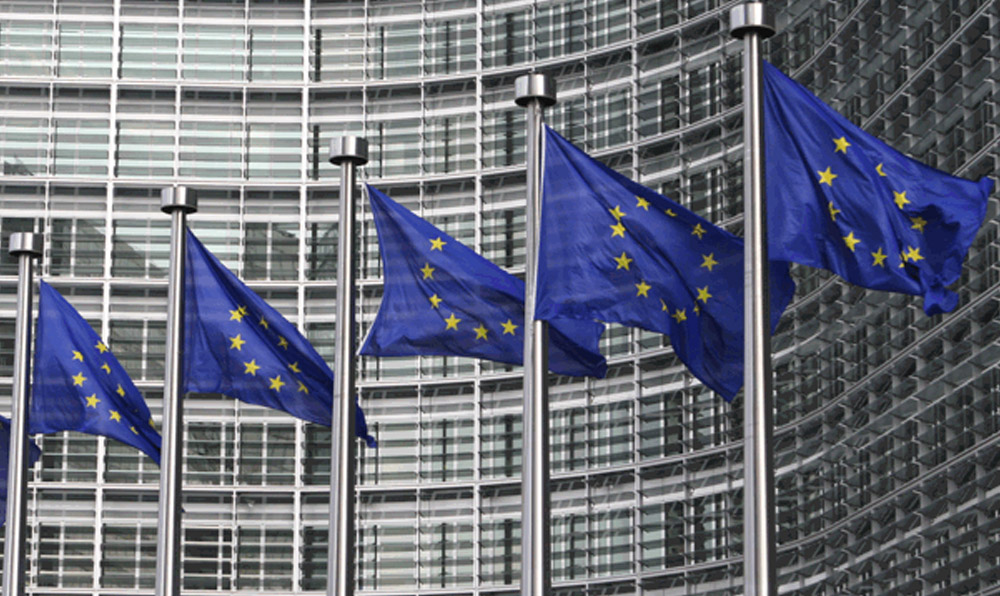‘So how much does it cost?’ is the number one question that people, in general, ask when purchasing anything.
It will, therefore, come as no surprise to learn that pricing is also right at the top of the query list for businesses looking for denied party screening software solutions.
The importance of budgetary planning aside, it’s one of the fundamental ways companies can evaluate value, features, and functions, and how one denied party screening solution compares against its competitors. It’s also the method to determine what on the checklist is critical for now, and what can be put on a wish list to be addressed later so as to keep pace with future business growth and expansion.
There are a series of factors that influence the investment of a denied party screening software solution, such as the number of users, the sanction lists to screen against and the deployment / implementation options. The number of entities that need to be screened on a weekly, monthly or yearly basis is also an important factor.
The range of cost for a denied party screening solution starts at a few thousand dollars a year for a basic implementation covering small screening volumes and one user. At the other end of the spectrum, the annual price of compliance tools could run up to $100,000 or more for enterprise-level solutions that are typically deployed by regional or global companies consisting of multiple business units distributed across distinct geographic regions with hundreds of users managing large screening volumes which are potentially integrated into multiple business systems. However, a typical customer screening 50,000 entities should budget around $20,000 a year for a denied party screening solution.

For those with extremely small screening volumes (about one or two per month), free sites might make sense to try out. But these services offer only the bare bones versions of those provided by solutions vendors. If you do opt to go in this direction, make sure to choose official, government sites.
That said, we will now break the investment down into major components, providing a guide on the considerations that influence how sanctions screening software are priced.
Top 10 Considerations that Make Up the Pricing of Denied Party Screening Software Solutions
In This Article:
- Are you looking for online ad hoc screening?
- How many users will need to access the denied party screening software solution?
- What sanctions lists do you need to screen against?
- Is screening resolution and escalation workflow important to you?
- How will audit and history help your compliance function?
- Should you be adding batch screening?
- Do you want to do automated daily rescreening?
- When should you be thinking about integrated screening?
- How important is customer support to your success?
- Do you require mobile denied party screening?
ONE: Are you looking for online ad hoc screening?
What it is: This is the most basic package that companies can opt for from any vendor. As the name suggests, you can screen entities against multiple sanctions lists on an ad hoc basis using an online denied party screening solution.
Why it is important: This level of access is best suited for companies at the entry level stage of export compliance, or where their weekly or monthly screening volumes are low, which from an operations point of view translates into a couple of screenings per week.
TWO: How many users will need to access the denied party screening software solution?
What it is: This is the number of users required to efficiently perform compliance operations to minimize risk and stay on the right side of the law. The number will depend on the size and volume of your operations. The smallest would consist of a one-user set-up with the largest being enterprise-level deployments covering several hundred to tens of thousands of users. The typical base, however, ranges from five or 10 to around a hundred people.
Why it is important: Knowing the right number of users of the sanctions screening software will help maximize cost efficiency in terms of optimizing compliance coverage across the value chain. Also, because compliance should be thought of as an organization-wide effort, it is important to plan accordingly for users in multiple departments including Supply Chain and Logistics, Export and Import Compliance, Legal, Human Resources, Administration, Procurement and Sales and Marketing.
THREE: What sanctions lists do you need to screen against?
What it is: There are hundreds of lists that exist, not just in the United States but all around the world, not to mention those maintained by world bodies such as the United Nations, World Bank, Interpol and many others. Deciding on which denied parties lists to screen against depends on your scope of business. For example, if you are an American-based manufacturer trading internationally, it makes sense to screen against U.S. State, Commerce and Treasury (OFAC) sanctions lists, but not against the General Services Administration (GSA) list unless you are also involved in federal government contracts.
Why it is important: Knowing exactly which lists apply to your business helps to maintain an elevated level of compliance, reduce the impacts of false positives, and provide a comprehensive view of entities you need to screen, all while keeping costs of the denied party screening solution under control.
FOUR: Is screening resolution and escalation workflow important to you?
What it is: So, your screening activity returns a positive match. What do you do now? This is where a workflow plays a critical role in providing online steps that help you to easily investigate, clear and annotate, or escalate potential hits or red flags to the company compliance officer or legal counsel.
Why it is important: Robust compliance tools will include a dashboard view to increase visibility and control of compliance activities. More importantly, this allows for faster resolution of potential matches, which in turn speeds up risk management processes including sales, order entry, shipping, procurement, and hiring. This capability makes sense for advanced compliance users, or high-volume and geographically dispersed operations where centralized and consistent follow-up of hits is more challenging.
FIVE: How will audit and history help your compliance function?
What it is: This is an audit trail of screening activities automatically logged in a secure, tamperproof environment.
Why it is important: Having this capability is critical to prove due diligence in the event of a government or internal audit, which is more likely than not in today’s world. Logs from industry leading compliance software include who performed a search, when it was performed, what search term and setting were used, and the results themselves.
SIX: Should you be adding batch screening?
What it is: Sometimes called bulk screening, batch screening’s usefulness lies in its ability to cleanse a database of volumes of restricted parties in one fell swoop. The best practice advice is that this should cover everyone in an organization on an ongoing basis, including buyers, resellers, suppliers, contractors, employees, new hires, and contractors.
Why it is important: This sanctions screening software feature is especially beneficial for companies at the start-up phase of their compliance journey, or whose process includes periodic scans, or in exceptional cases such as when vetting the people and trade chain partners of a mergers and acquisition target.
SEVEN: Do you want to do automated daily rescreening?
What it is: Automated rescreening / dynamic screening is the process of automatically rescreening entities in your sphere of business daily against additions to official restricted party watchlists. ‘Daily’ is the point to note because some vendors rescreen periodically, which is not timely enough to avoid a sanctions violation. In selecting a compliance software vendor, it is crucial to understand the capabilities and scope of the denied party screening solution. Since this is automated, the recommended frequency for dynamic screening should be set as daily.
Why it is important: Dynamic screening helps organizations keep pace with changes to screening lists on an almost real time perspective, where periodic batch screening would be deemed insufficient. For instance, this allows organizations to be alerted to recent additions of previously screened and cleared customers to a watch list. Other examples include high-volume transaction environments from ecommerce and banking to sales departments looking to weed out dubious opportunities as early as possible so that they can focus their time and energy on legitimate ones to increase sales efficiency and velocity.
EIGHT: When should you be thinking about integrated screening?
What it is: This is where denied party screening is integrated directly into your business system. Robust compliance tools should be able to integrate with almost any system from enterprise resource planning (ERP), customer relationship management (CRM) to legacy and homegrown ones.
Why it is important: This option makes sense for high-volume businesses whose compliance objective is for consistent and reliable screening, regardless of the number of daily transactions. High performing integrated denied party screening solutions will be cost effective and quick to deploy. Integrated screening improves productivity many times over, but only as long as the data going in is properly structured.
NINE: How important is customer support to your success?
What it is: Reputable denied party screening vendors will have responsive customer support teams to help you get the most out of your compliance tools.
Why it is important: Industry leading vendors will have a significant portion of their teams based around the world, with a focus in North America, the United Kingdom and European Union. The reliable ones will also get to understand your business and provide advice on what sanctions lists need to be deployed and strategies to reduce false positives. They will additionally provide unlimited access to customer service and success managers along with unlimited training as part of the overall pricing of the denied party screening software package.
TEN: Do you require mobile denied party screening?
What it is: Compliance obligations don’t stop when you leave your desk. A robust sanctions screening software will include an option designed specifically for mobile devices, operating on major platforms, simply because we live and work in a mobile first environment.
Why it is important: This comes in handy for screening potential business opportunities in conferences or overseas trips or for ad hoc scans at cargo shipment points and warehouses.
Denied Party Screening Pricing Scenarios
If your organization is a one-user set up with limited screening volume, you would need online screening. To check through your entire database of contacts, you would also require batch screening. And to make sure you don’t miss matches of someone you had previously screened and cleared you would also need periodic rescreening thereafter. Then there are audit and history capabilities to prove your compliance due diligence. The typical starting price of a denied party screening software with these features would be in the few thousand dollars per year range.
For large-scale deployments, covering hundreds of users, multiple companies, business units, divisions and geographic regions, enterprise-level solutions are required, for which prices of the screening tool would start at about $100,000.
Some ways to manage the investment required for a sanctions screening solution includes selecting vendors who provide free unlimited training, feature rich basic packages, flexible deployment options that can fit into existing systems and business processes, and responsive customer service to assist you in getting the most out of your compliance tools. But to make sure you are not overpaying, review the top 10 denied party screening solution pricing guideline provided above.
Free Government Search Tools for Extremely Small Screening Volumes
As mentioned earlier, you can easily find and access free government sites to perform restricted party screening. Examples include those managed by the Treasury Department’s Office of Foreign Assets Control (OFAC) at https://sanctionssearch.ofac.treas.gov/ or the Commerce Department’s Consolidated List Screening (CLS) at https://2016.export.gov/ecr/eg_main_023148.asp.
The one and only upside is that it is free. It’s a great option for those looking for some quick education as they delve into watchlist screening for the first time, or those with truly sparse screening volumes of maybe one or two screenings per month.
On the flip side, there are more than a few downsides, especially where an organization’s screening volumes are higher. The main issues with these free tools are that they are manual with no batch or integrated screening functionality. There is no possibility of simultaneously screening against multiple list groups from different government departments or jurisdictions–for example, with the sites provided above, you would have to go to the Commerce site and screen there and then repeat the exercise at the OFAC site. While there is some guidance as to what to do in the event of a positive match, there is little to no other support. And you have to set up your own audit trails.
Compliance Return on Investment
Complying with regulatory requirements is non-negotiable, but that doesn’t mean that ROI rules cannot be applied. Compared against the price of a sanctions screening software, the cost of non-compliance is many times higher, and in the current regulatory climate, the risks of sanctions enforcement activities are significant. The impact of a compliance violation goes beyond the monetary penalty- which can run into millions- to include hidden costs from reputational damage, business disruptions, and revenue loss.
What reputable denied party screening solution vendors all have in common is that the right compliance tools combined with the right content will be worth the cost many times over. That’s because the simple act of continuous compliance allows you to focus on your core business missions without worrying about legal headaches.
Put another way, strong compliance is an enabler of business growth. It opens doors to new markets, increases sales velocity, facilitates the timely delivery of products and services, helps keep customers happy, and, ultimately, boosts the bottom line.
How Descartes can help
Descartes provides a suite of premier denied party screening software solutions that helps organizations around the world reach the highest export compliance standards while reducing the risk of negative impacts to the bottom line. Our easy-to-implement, cloud-based solutions improve the efficiency of compliance teams and strengthen organizational governance, risk, and due diligence processes. Utilizing advanced technology, Descartes’ search algorithms reduce false positives and provide visibility and vetting methodology on priority items in a centralized workflow format with an automatically generated audit trail. Our compliance software delivers superior sanctions screening performance at exceptional value.
But don’t take our word for it, see what users are saying about our solutions. For more information including a demo and a trial, reach out to me directly or Contact Us.

We Answer Your Questions About Denied Party Screening
- How Much Does A Denied Party Screening Solution Cost?
- Top Red Flags to Look Out for When Selecting a Denied Party Screening Software Vendor
- How to Identify a Best-In-Class Denied Party Screening Software
- How to Manage False Positives in Denied Party Screening
- How to Effectively Compare Denied Party Screening Software Vendors
- What do Organizations in my Industry Need to be Mindful of When it Comes to Denied Party Screening and Export Compliance?
- Unforced Errors in the World of Export and International Trade Compliance Violations That You Need to Know About
- 12 Steps to Optimize Your Denied Party Screening Program
- ROI of Compliance: How Denied Party Screening Drives Value Creation for the Organization
- Top Five Best Practices to Integrated Denied Party Screening



